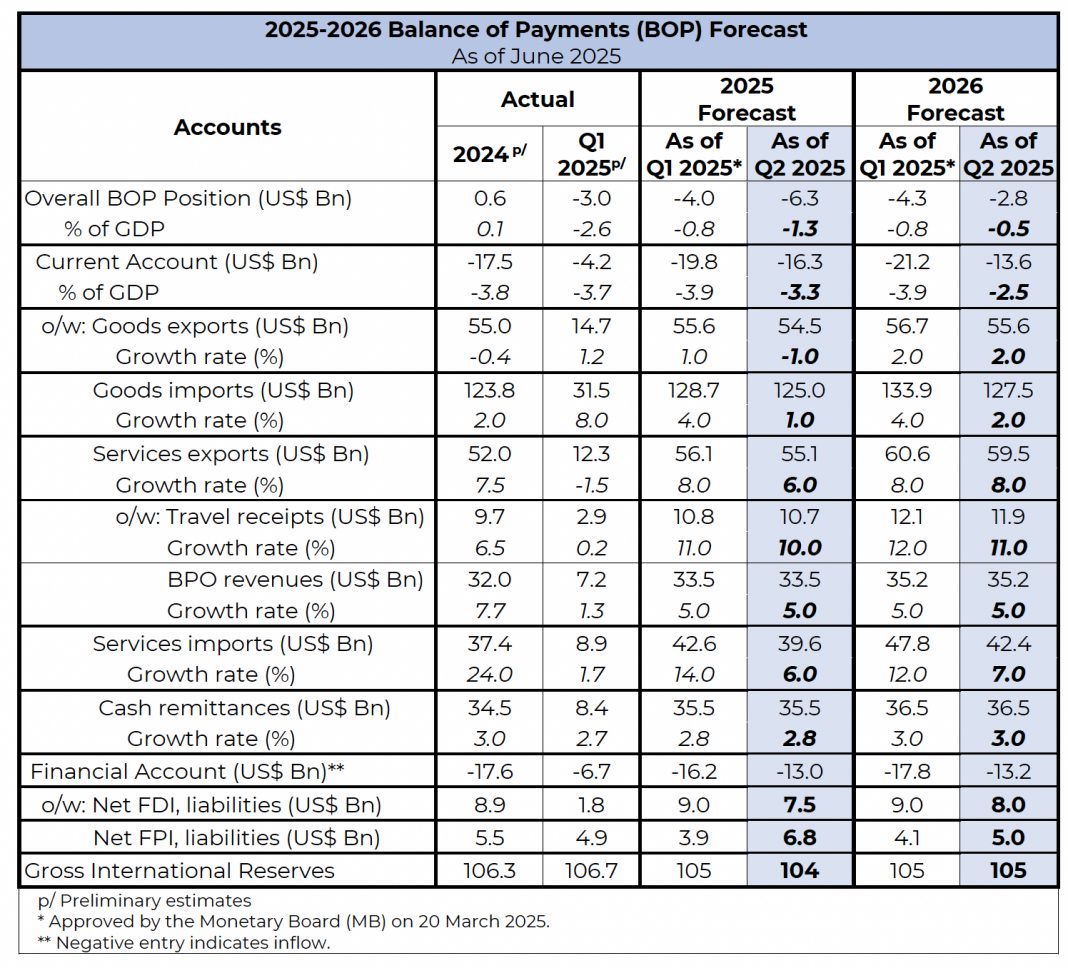Bangko Sentral ng Pilipinas (BSP) expects the Balance of Payments (BOP) to record deficits of approximately 1 percent of Gross Domestic Product (GDP) in both 2025 and 2026. This outlook is primarily driven by an anticipated continued current account shortfall and a moderation in financial flows, despite the domestic economy benefiting from steady growth, low inflation, and ongoing structural reforms. These positive domestic factors are, however, tempered by global trade uncertainty, heightened geopolitical risks, and weakened investor confidence.
BSP says the current account is expected to remain in deficit, estimated at around 3 percent of GDP, reflecting a persistent gap between national savings and investment. This necessitates continued external financing to bolster the country’s infrastructure-led, investment-driven growth strategy.
Goods exports are facing significant headwinds, including persistent global trade uncertainty, challenges in competitiveness, and constraints within the semiconductor industry. While trade diversion presents potential opportunities, these are currently hampered by logistical inefficiencies and workforce limitations. Conversely, imports are supported by stable domestic demand and robust infrastructure spending, though their value is somewhat offset by declining global commodity prices, particularly for oil.
The services trade sector demonstrates broad resilience, yet it is not without downside risks. Revenues from outsourcing are sustained by consistent demand for contact center services, but face uncertainties stemming from U.S. job reshoring initiatives and local talent shortages. Meanwhile, tourism receipts are receiving a boost from improvements in airport infrastructure and increased accommodation availability. However, growing competition from other regional destinations and rising transport costs may moderate the pace of recovery.
Steady remittance flows from overseas Filipino workers continue to provide a crucial buffer against the trade deficit. This stability is underpinned by strong labor demand for Filipino workers in key sectors and the aging populations in host countries. Innovations in digital payments and the Philippines’ recent removal from the Financial Action Task Force grey list have also contributed to reduced transfer costs. Nevertheless, the emergence of protectionist policies in some host countries presents an evolving risk.
Foreign investment inflows remain positive but subdued, as policy uncertainty and the global economic slowdown weigh on investor sentiment. To counter this, the government’s concerted efforts towards accelerated infrastructure development, expanded fiscal incentives, and investment-enhancing reforms – including the CREATE MORE Act and the Capital Markets Efficiency Promotion Act – are anticipated to attract more long-term investments.
The moderation in trade and investment flows is expected to limit the country’s ability to significantly build up foreign exchange reserves. Despite this, reserves are projected to remain ample, providing sufficient liquidity to cushion the economy against potential external headwinds.
The Bangko Sentral ng Pilipinas (BSP) emphasizes the inherent limitations of these forecasts given the dynamic and evolving external landscape. The BSP reaffirms its commitment to closely monitor external developments and associated risks, assessing their potential impact on the fulfillment of its core objectives for price and financial stability.




